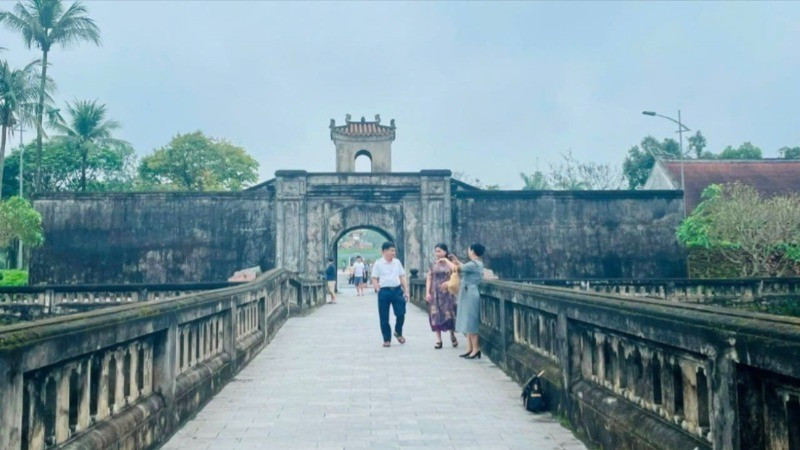A breakthrough opportunity for Viet Nam’s tourism sector
Viet Nam is embarking on an unprecedented administrative restructuring, with the number of provinces and cities set to be reduced by nearly half. This is not only a major step forward in institutional reform but also presents a golden opportunity to reshape the national tourism map towards stronger regional integration, sustainable development, and heightened competitiveness.

Expanding tourism space
According to the Party Central Committee’s Resolution 60 issued in April, the country will soon consist of 34 provinces and cities instead of the current 63. The new local government structure will comprise two levels: provincial (provinces and centrally governed cities) and communal (communes, wards, and special zones under provincial authority).
Understandably, this has raised concerns among some about the fate of longstanding tourism brands that have already made a mark and may be affected, potentially complicating destination marketing and promotion efforts.
However, experts believe that merging administrative units offers far more opportunities for tourism development. Consolidating resources under a unified structure provides the practical conditions needed to effectively realise tourism development goals at the local level.
Associate Professor Pham Hong Long from the University of Social Sciences and Humanities (Viet Nam National University, Ha Noi), commented that one of the significant advantages of such mergers is the enhanced capacity for robust regional cooperation. The expansion of geographical space and the combination of tourism resources will form a solid foundation for strengthening collaboration in promotion, infrastructure development, and the creation of diverse, complementary tourism product chains within a wider territory.
Sharing this perspective, Le Cong Nang, General Director of WonderTour, noted that weak inter-provincial cooperation has long been a bottleneck hindering the development of Viet Nam’s tourism industry and affecting the seamless and varied experiences travellers seek. However, once localities are merged, larger tourism zones will emerge, enabling the development of attractive inter-regional and inter-provincial tourism products.
For instance, visitors to Tuyen Quang previously focused primarily on revolutionary history tours, but after the merger of Tuyen Quang and Ha Giang, they will also be able to explore the Dong Van Karst Plateau and its stunning mountain passes, blending cultural and nature-based tourism in a single itinerary.
Similarly, the merger of Binh Dinh and Gia Lai promises to create a unique sea-to-mountain journey, while the of Lao Cai and Yen Bai will help establish a richly experiential north-western tourism belt, where visitors can enjoy conquering Mount Fansipan and admiring the terraced fields of Mu Cang Chai.
According to Nang, the merger of provinces and cities is a strategic step in improving tourism management, enabling localities to better mobilise resources for large-scale, professional promotional campaigns targeting key markets. The formation of larger tourism zones with high development potential will also attract investor interest, facilitating easier investment and serving as a catalyst for upgrading tourism infrastructure and developing new products and services.
Shaping the national tourism map
Not long ago, the Ministry of Culture, Sports and Tourism issued a directive to the governments of provinces and centrally governed cities, requesting that the names of World Cultural and Natural Heritage sites, special national sites, national sites, and provincial sites that have been recognised and classified remain unchanged. This ensures that the original elements of these sites and their historical, cultural, and scientific value are preserved, even as the associated place names are updated in line with the new administrative divisions.
Thus, although administrative names will change after provincial and city mergers, the names of famous landmarks and monuments that embody local cultural and historical identities will largely remain intact and continue to be recognised. In reality, when choosing destinations, most tourists care less about which province a place belongs to and more about the services, products, and experiences available.
Therefore, instead of worrying about changes in administrative naming, experts argue that it is more important for localities to develop cohesive and well-crafted tourism strategies that highlight the unique value of their destinations along the travel route.
Experts further note that with a changed tourism landscape and expanded resources, each locality’s tourism development policy will also need to be revised. For example, while Phu Yen has traditionally focused on coastal tourism, its merger with Dak Lak—renowned for its forest resources and Central Highlands cultural identity—will necessitate a broader development strategy to encompass all key tourism values. Organisational structures, functional responsibilities, development policies, and methods of delivering tourism value chains must all be re-evaluated for consistency.
Long emphasised that tourism is an integrated economic sector characterised by cross-regional, cross-sector, and high level of private sector participation. Therefore, after the mergers, localities must invest in building comprehensive destination branding strategies, with particular focus on cultural assets to highlight distinctive identities, create differentiation, and enhance destination competitiveness.
Nang stressed that, following an assessment of the resource systems in merged localities, it is essential to develop a comprehensive and coordinated tourism master plan. This plan should clearly identify key tourism zones, inter-regional products, and routes to avoid duplication and ensure connectivity and mutual support among areas.
Alongside improving policy frameworks to support tourism growth and encourage investment—particularly in community-based, green, and smart tourism—localities must also adopt strategies for training and upskilling the workforce to meet new industry demands.
From a tour operator’s perspective, Nang pointed out that businesses will be compelled to study the market and monitor trends in order to adapt their products and services to suit the new scale and characteristics of merged localities. This will require investment not only in time but also in resources and creativity.
Additionally, travel companies must work closely with newly merged localities to produce updated tourism documents and maps, providing tourists with clear visualisations of new offerings, thereby improving communication, promotion, attraction, and increasing both visitor spending and length of stay.
Clearly, with thorough and proactive preparation, the merger of provinces and cities can serve as an effective springboard for Viet Nam’s tourism sector to restructure, achieve significant breakthroughs, enhance its competitiveness, and rapidly become a leading economic sector of the country.








